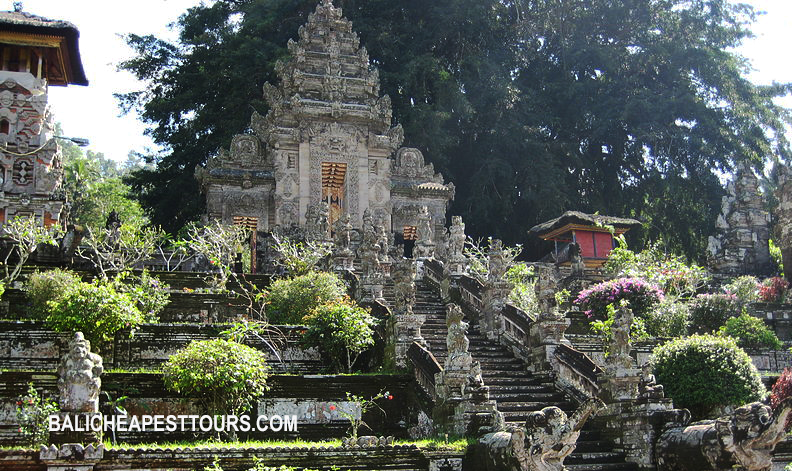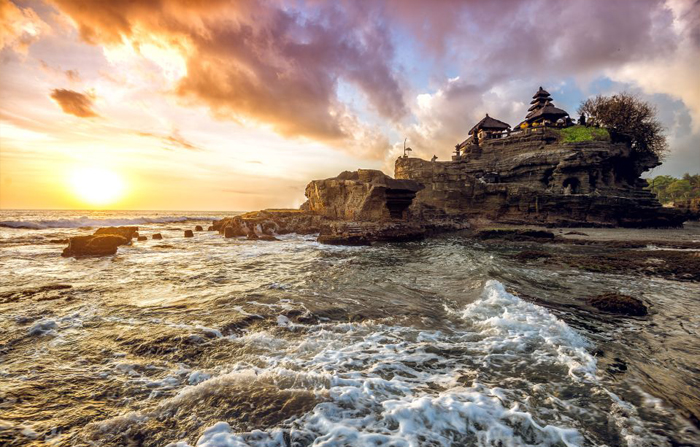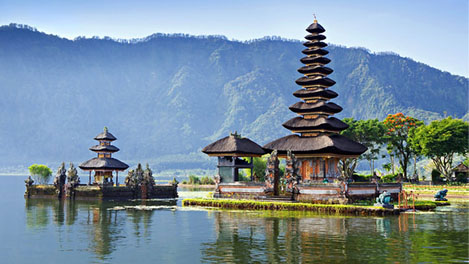Pura Kehen Temple in Bali
Pura Kehen Temple is a magnificent Hindu Temple situated on the foot of the south part of Bangli Hill, right in the Pakuwon environment that is a residential and a part of Bangli Town. It is just 45 km from Denpasar City or 20 minutes from Kintamani, one of the famous tourist destinations in Bali. This temple is featured by the strategic location with Balinese traditional architectures and blanketed by the cool temperatures that make it as a tourist destination in Bangli worth to visit.

Pura Kehen is a many-tiered stone homage to the Hindu pantheon. Bearing stelae inscribed in Sanskrit, Balinese and Javanese that seem to indicate an 11th century founding, this is the state temple of the Bangli kingdom and considered one of the region’s finest. It is said to be a miniature version of Bali’s most significant temple, Pura Besakih, just 13 miles (21 km) away. The complex is comprised of a sloping terraced entryway, the main temple with three interior courtyards and a series of smaller meru shrines and altars.
The main temples is accessed by a series of 38 stone steps, passing eight well-manicured terraced gardens. Its elaborate carvings and tall, slender doors give way to three courtyards, the second bears inlaid Chinese porcelain and the innermost courtyard features an 11-tiered meru roof. Along the base of the buildings’ exteriors, it’s possible to see stylized carvings of snakes and turtles, representing the underworld. Within the central courtyard is an impressive moss-blanketed stone lotus throne. During the many annual religious ceremonies, like Pangerwesi when locals visit temples to guard against evil, it’s possible to see colorful dances on the temple grounds and baskets of fruit laid in tribute.
Kehen Temple History
Pura Kehen Temple was the main temple of the Bangli Regency. Bangli Regency was formerly the center of a kingdom known under the same name. The Bangli Kingdom was one of the nine kingdoms of Bali. The name Bangli derives from bang giri, meaning "red forest" or "red mountain". The Regency of Bangli was founded by the Gelgel Kingdom of the Majapahit dynasty.
Pura Kehen was mentioned three times in three copper inscriptions dated from the late 9th-century, the early 11th-century, and the 13th-century. The copper inscriptions mentioned the temple under different names. In the late 9th-century inscription, the temple was mentioned as Hyang Api ("god of fire) by the Brahmans who maintain the temple.
In the second inscription dating to the early 11th-century, the temple was named Hyang Kehen; the word Kehen is derived from the Balinese word keren which means "flame". In this period, the Pura Hyang Kehen was the official temple where oath ceremonies took place for royal officials. In such ceremonies, those who are proven unfaithful will be subjected to the terrible sapata ("curse") to him, his families, and his descendants.
The oath ceremony was performed in front of the figure of Hyang Api or Hyang Kehen, the god of fire Agni. A vessel known as bejana sarpantaka was used for such performance; this vessel, which is decorated with four serpents winding around the vessel, was kept in an enclosed pavilion to the east of the main shrine of Pura Kehen.
How to get there ?
Pura Kehen Temple in the southern portion of the Bangli region, is just over a mile north of the town of Bangli. It’s 26 km (16 miles) northeast from Ubud (about an hour’s drive in normal traffic) and 43 km (27 miles) north of Denpasar. Adult admission is around 15,000 IDR ($1.15) and children are free. Hours are approximately 9am- 5pm; many visit as part of Bali tour package.
-
Address: Cempaga, Bangli Sub-District, Bangli Regency, Bali.



